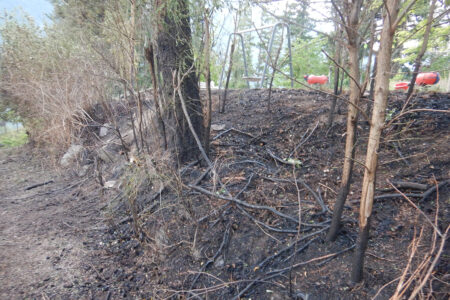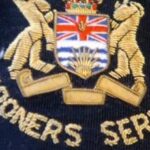Think FAST during stroke awareness month
Stroke is the third-leading cause of death and a leading cause of disability in Canada. Treatment is complex and time sensitive. In light of this, Interior Health urges residents to know the signs of stroke and get help as quickly as possible.
“The importance of early recognition can’t be overstated,” says Dr. Todd Collier, a stroke neurologist at Royal Inland Hospital and Interior Health regional stroke lead. “The fact is many people who could benefit from treatment don’t access medical help quickly enough. Remember ‘FAST: Face, Arm, Speech, Time’. If the face is drooping on one side, or there is weakness in one arm, or if speech sounds slurred or strange, it is time to call 911.”
Interior Health continues to build on its success in improving treatment for stroke patients, with the (age-adjusted) rate of deaths due to stroke decreasing over the last four years. The Canadian Institute for Health Information recently ranked Royal Inland (RIH) in Kamloops as the best performing hospital in B.C. in the rate of deaths caused by stroke. RIH also placed fourth for best stroke patient outcomes among larger Canadian hospitals.
Interior Health participates in the BC Patient Safety & Quality Council Stroke Collaborative. Teams at five Interior Health sites have been participating in this Collaborative since September 2011: Shuswap Lake General Hospital in Salmon Arm; Royal Inland in Kamloops, Kelowna General, Cranbrook’s East Kootenay Regional Hospital and the Kootenay Boundary Regional Hospital in Trail.
The Collaborative teams are working together to ensure efficient pre-hospital care, increase the rate of rapid medical interventions, further best-practice in Emergency Department stroke care, and help ensure patients at high risk for stroke receive the necessary follow-up.
“Across Interior Health the Collaborative teams have been active in making improvements at their sites. They are now looking at expanding the impact of their work to better support consistent stroke care at all of our facilities,” says Interior Health practice lead Lori Seeley.
For example some of the highlights include:
· In the Kootenays teams are focussed on knowledge sharing to improve outcomes. This spring stroke specialist from East Kootenay Regional Hospital Dr. Errin Sawatsky and the Cranbrook TIA Clinic nurse travelled to Kootenay Boundary Regional Hospital to conduct education and training with the Trail area’s stroke team.
· In Salmon Arm the SLGH team has been busy spreading the word about stroke care throughout the hospital and the community with posters, consistent TIA rapid access clinic referral forms for physicians’ offices, and education sessions for staff.
· In April Kelowna hosted the fourth in a series of learning sessions that brought together members of the Collaborative and stroke experts from throughout the province to share experiences and ideas to date. Staff have been working on incorporating many of the learnings shared through the Collaborative to bring further consistency to stroke care in the central Okanagan.
· In Kamloops the Stroke/Quality team worked with nursing students to provide education and resources to local medical office assistants. These assistants now recognize symptoms of a stroke when a patient calls to book an appointment and direct them to the hospital for immediate treatment.
“We would like to recognize the collaboration and commitment of the many partners involved in helping us improve stroke care,including BC Ambulance Service and the BC Patient Safety Quality Council,” says Interior Health Board Chair Norman Embree. “In addition our hospital Emergency Departments, Diagnostic Imaging, Rehabilitation Services and Community Care have all been working to improve outcomes for these patients.”
For information about stroke and TIA signs, symptoms, treatment and recovery contact Lori Seeley at (250) 314-2100 (Ext. 3753) or lori.seeley@interiorhealth.ca.






















